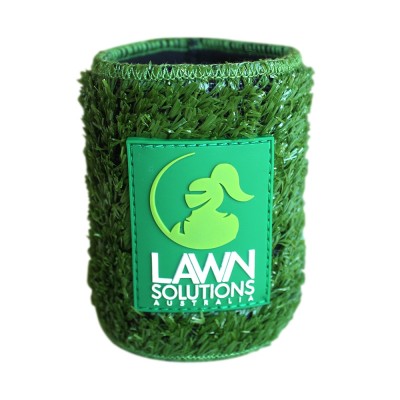There are many sustainable gardening practices that can assist your lawn. From how you mow your lawn to how you harness and use water, we’ve provided here a list of some methods and actions to help you achieve your sustainability goals, with your lawn in mind.
Watering wisely
Grey water can be used on your lawn by way of a bucket or a grey water system.
Grey water is the wastewater from washing machines, laundry tubs, baths, showers and wash basins. It doesn’t include wastewater from the toilet, dishwasher or kitchen sink.
Using grey water reduces pressure on waste systems and also saves on drinking water. If you want to use grey water, be sure to use suitable detergents (low in phosphorus and sodium) that won’t harm your plants and lawn. These types of detergents are readily available at your local supermarket.
Regulations on grey water use vary across the country and from council to council, so you need to check with the relevant authorities to find out what is legal and suitable for you.
Making use of clippings
During autumn you may be mowing your lawn more frequently and have too many grass clippings to leave on your lawn – there are other good uses for them.
Compost
Grass clippings are high in nitrogen. Combined with brown material, clippings break down quickly and provide a nutrient-rich compost that can be applied to your garden. Take a look at this post for more on general composting.
Mulch for garden beds
Grass clippings help your garden to retain moisture, block out weeds and add nutrients to your soil. The nitrogen and potassium within the clippings are also great for your plants.
Liquid fertiliser
Place your grass clippings in a bucket of water and allow them to steep. Nutrients such as potassium, nitrogen, phosphorus and amino acids will leach into the water. After a few days you can strain the liquid and apply it to your plants.
It is OK to leave your clippings on the lawn every now and then. Recycling your grass clippings on your lawn can supply 25% of its annual nitrogen requirements. Leaving too many clippings on the lawn can cause your grass to burn and lose colour, so make sure you’re only cutting a little off the leaf when you plan to leave it on the lawn.
Passing on pesticides/herbicides
If you follow the other suggestions listed above and below you may not need to use pesticides and herbicides at all. When the occasional weed pops up, simply remove it by hand.
The trick with weeds is to get onto them early. Many small weeds can be carefully removed by hand, but you need to get the roots out. A weeding trowel or long handled mechanical device can help with total removal.
Controlling weeds with mowing frequency/height
Don’t mow too short as doing so invites weeds to establish in your lawn. Longer lawns combat blown in seed germination much better. They also require less water.
Another mowing tip is to mow regularly to keep your lawn lush and thick. This will help to choke out weeds.
Going electric
Speaking of mowing, you can try a battery-powered mower. Electric mowers are now available that run on batteries that last a reasonable amount of time. These days there are battery powered mowers that cut well too. These types of mowers are generally cheaper than petrol models and easier to maintain.
Selecting a drought-tolerant lawn
If you’re looking to install a new lawn, look for a variety that can hold up well in drought conditions, like TifTuf. TifTuf can establish roots in just seven days. This is up to 75% faster than other grass types, which means Tiftuf can be established with a lot less water.
Letting your lawn go dormant
Grass is extremely resilient. Most common lawn types in Australia can survive extended periods of drought. They will lose colour, become brown and dry, with little to no leaf growth, but they will generally sit dormant until it rains.
In summer when temperatures are high, grasses will enter a state of dormancy where they shut down tissue growth to preserve moisture. You can usually tell if a lawn is still alive by looking at the crown at the base of the leaves. If the crown is white to off white, it is likely that it’s still alive. A dead lawn will be dry, brown and brittle across the entire plant – the leaves, the roots and the crown.
Improving your soil
To maximise moisture retention in your soil, you may need to add some soil amendments. For a review on this topic, go here.
Practising sustainable gardening regarding lawns may include choosing the appropriate variety of lawn, changing lawn care habits and/or adopting waterwise systems. Recycling resources such as grass clippings and food scraps can play a part too. For more information on a drought tolerant variety of lawn, check out this post.


